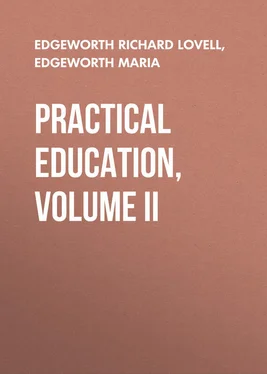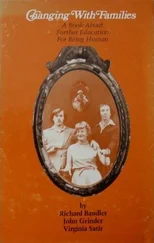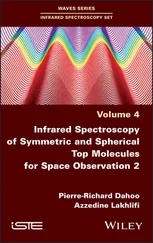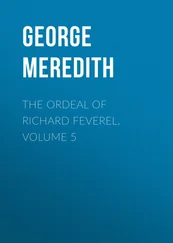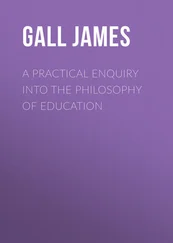Richard Edgeworth - Practical Education, Volume II
Здесь есть возможность читать онлайн «Richard Edgeworth - Practical Education, Volume II» — ознакомительный отрывок электронной книги совершенно бесплатно, а после прочтения отрывка купить полную версию. В некоторых случаях можно слушать аудио, скачать через торрент в формате fb2 и присутствует краткое содержание. Жанр: Прочая научная литература, foreign_edu, foreign_antique, foreign_prose, на английском языке. Описание произведения, (предисловие) а так же отзывы посетителей доступны на портале библиотеки ЛибКат.
- Название:Practical Education, Volume II
- Автор:
- Жанр:
- Год:неизвестен
- ISBN:нет данных
- Рейтинг книги:3 / 5. Голосов: 1
-
Избранное:Добавить в избранное
- Отзывы:
-
Ваша оценка:
- 60
- 1
- 2
- 3
- 4
- 5
Practical Education, Volume II: краткое содержание, описание и аннотация
Предлагаем к чтению аннотацию, описание, краткое содержание или предисловие (зависит от того, что написал сам автор книги «Practical Education, Volume II»). Если вы не нашли необходимую информацию о книге — напишите в комментариях, мы постараемся отыскать её.
Practical Education, Volume II — читать онлайн ознакомительный отрывок
Ниже представлен текст книги, разбитый по страницам. Система сохранения места последней прочитанной страницы, позволяет с удобством читать онлайн бесплатно книгу «Practical Education, Volume II», без необходимости каждый раз заново искать на чём Вы остановились. Поставьте закладку, и сможете в любой момент перейти на страницу, на которой закончили чтение.
Интервал:
Закладка:
It is not necessary, in teaching children the technical language of any art or science, that we should pursue the same order that is requisite in teaching the science itself. Order is required in reasoning, because all reasoning is employed in deducing propositions from one another in a regular series; but where terms are employed merely as names, this order may be dispensed with. It is, however, of great consequence to seize the proper time for introducing a new term; a moment when attention is awake, and when accident has produced some particular interest in the object. In every family, opportunities of this sort occur without any preparation, and such opportunities are far preferable to a formal lecture and a splendid apparatus for the first lessons in natural philosophy and chemistry. If the pump belonging to the house is out of order, and the pump-maker is set to work, an excellent opportunity presents itself for variety of instruction. The centre pin of the handle is taken out, and a long rod is drawn up by degrees, at the end of which a round piece of wood is seen partly covered with leather. Your pupil immediately asks the name of it, and the pump-maker prevents your answer, by informing little master that it is called a sucker. You show it to the child, he handles it, feels whether the leather is hard or soft, and at length discovers that there is a hole through it which is covered with a little flap or door. This, he learns from the workmen, is called a clack. The child should now be permitted to plunge the piston (by which name it should now be called) into a tub of water; in drawing it backwards and forwards, he will perceive that the clack, which should now be called the valve, opens and shuts as the piston is drawn backwards and forwards. It will be better not to inform the child how this mechanism is employed in the pump. If the names sucker and piston, clack and valve, are fixed in his memory, it will be sufficient for his first lesson. At another opportunity, he should be present when the fixed or lower valve of the pump is drawn up; he will examine it, and find that it is similar to the valve of the piston; if he sees it put down into the pump, and sees the piston put into its place, and set to work, the names that he has learned will be fixed more deeply in his mind, and he will have some general notion of the whole apparatus. From time to time these names should be recalled to his memory on suitable occasions, but he should not be asked to repeat them by rote. What has been said, is not intended as a lesson for a child in mechanics, but as a sketch of a method of teaching which has been employed with success.
Whatever repairs are carried on in a house, children should be permitted to see: whilst every body about them seems interested, they become attentive from sympathy; and whenever action accompanies instruction, it is sure to make an impression. If a lock is out of order, when it is taken off, show it to your pupil; point out some of its principal parts, and name them; then put it into the hands of a child, and let him manage it as he pleases. Locks are full of oil, and black with dust and iron; but if children have been taught habits of neatness, they may be clock-makers and white-smiths, without spoiling their clothes, or the furniture of a house. Upon every occasion of this sort, technical terms should be made familiar; they are of great use in the every-day business of life, and are peculiarly serviceable in giving orders to workmen, who, when they are spoken to in a language that they are used to, comprehend what is said to them, and work with alacrity.
An early use of a rule and pencil, and easy access to prints of machines, of architecture, and of the implements of trades, are of obvious use in this part of education. The machines published by the Society of Arts in London; the prints in Desaguliers, Emerson, le Spectacle de la Nature, Machines approuvées par l'Académie, Chambers's Dictionary, Berthoud sur l'Horlogerie, Dictionaire des Arts et des Métiers, may, in succession, be put into the hands of children. The most simple should be first selected, and the pupils should be accustomed to attend minutely to one print before another is given to them. A proper person should carefully point out and explain to them the first prints that they examine; they may afterwards be left to themselves.
To understand prints of machines, a previous knowledge of what is meant by an elevation, a profile, a section, a perspective view, and a (vue d'oiseau) bird's eye view, is necessary. To obtain distinct ideas of sections, a few models of common furniture, as chests of drawers, bellows, grates, &c. may be provided, and may be cut asunder in different directions. Children easily comprehend this part of drawing, and its uses, which may be pointed out in books of architecture; its application to the common business of life, is so various and immediate, as to fix it for ever in the memory; besides, the habit of abstraction, which is acquired by drawing the sections of complicated architecture or machinery, is highly advantageous to the mind. The parts which we wish to express, are concealed, and are suggested partly by the elevation or profile of the figure, and partly by the connection between the end proposed in the construction of the building, machine, &c. and the means which are adapted to effect it.
A knowledge of perspective, is to be acquired by an operation of the mind directly opposite to what is necessary in delineating the sections of bodies; the mind must here be intent only upon the objects that are delineated upon the retina, exactly what we see; it must forget or suspend the knowledge which it has acquired from experience, and must see with the eye of childhood, no further than the surface. Every person, who is accustomed to drawing in perspective, sees external nature, when he pleases, merely as a picture: this habit contributes much to form a taste for the fine arts; it may, however, be carried to excess. There are improvers who prefer the most dreary ruin to an elegant and convenient mansion, and who prefer a blasted stump to the glorious foliage of the oak.
Perspective is not, however, recommended merely as a means of improving the taste, but as it is useful in facilitating the knowledge of mechanics. When once children are familiarly acquainted with perspective, and with the representations of machines by elevations, sections, &c. prints will supply them with an extensive variety of information; and when they see real machines, their structure and uses will be easily comprehended. The noise, the seeming confusion, and the size of several machines, make it difficult to comprehend and combine their various parts, without much time, and repeated examination; the reduced size of prints lays the whole at once before the eye, and tends to facilitate not only comprehension, but contrivance. Whoever can delineate progressively as he invents, saves much labour, much time, and the hazard of confusion. Various contrivances have been employed to facilitate drawing in perspective, as may be seen in "Cabinet de Servier, Memoires of the French Academy, Philosophical Transactions, and lately in the Repertory of Arts." The following is simple, cheap, and portable .
A B C, three mahogany boards, two, four, and six inches long, and of the same breadth respectively, so as to double in the manner represented.
The part A is screwed, or clamped to a table of a convenient height, and a sheet of paper, one edge of which is put under the piece A, will be held fast to the table.
The index P is to be set (at pleasure) with it sharp point to any part of an object which the eye sees through E, the eye-piece.
The machine is now to be doubled as in Fig. 2, taking care that the index be not disturbed; the point, which was before perpendicular, will then approach the paper horizontally, and the place to which it points on the paper, must be marked with a pencil. The machine must be again unfolded, and another point of the object is to be ascertained in the same manner as before; the space between these points may be then connected with a line; fresh points should then be taken, marked with a pencil, and connected with a line; and so on successively, until the whole object is delineated.
Читать дальшеИнтервал:
Закладка:
Похожие книги на «Practical Education, Volume II»
Представляем Вашему вниманию похожие книги на «Practical Education, Volume II» списком для выбора. Мы отобрали схожую по названию и смыслу литературу в надежде предоставить читателям больше вариантов отыскать новые, интересные, ещё непрочитанные произведения.
Обсуждение, отзывы о книге «Practical Education, Volume II» и просто собственные мнения читателей. Оставьте ваши комментарии, напишите, что Вы думаете о произведении, его смысле или главных героях. Укажите что конкретно понравилось, а что нет, и почему Вы так считаете.
